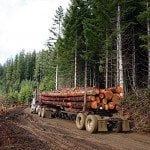If Ontario farmers grew locally just 10 per cent more of the fruits and vegetables that are currently imported, the benefit to the economy would be approximately a quarter of a billion dollars of GDP and 3,400 new full-time jobs. Additional benefits would be derived in the form of reduced energy use and reduced pollution from transportation. These are the conclusions of a new study into Southern Ontario’s food system.
At present, Ontario imports $20 billion worth of food a year, at the same time being a major food producer. The province’s agriculture sector, mainly in the southwestern area, produces $11.5 billion in farm products and employs almost three-quarters of a million people, about 11 per cent of the paid labour force. Farm production alone creates 214,000 full-time jobs and pumps $29.3 billion into the economy through farmers’ spending on resources and equipment. When food processing, manufacturing, distribution and retail, are added in, the total worth of the food system reaches $63 billion.
The report calls the food and beverage manufacturing industry “pivotal” in its importance to the Ontario economy. In 2013, this sector accounted for 16 per cent of all manufacturing in the province, and that importance has been increasing over the last few years.
The study of Ontario’s food production industry finds that of the $20 billion in food products that the province now imports, more than half could be produced here. Doing so would eliminate, the report claims, the existing trade deficit arising from the fact that Ontario imports almost twice as much food as it exports. “Over 50 per cent of the $20 billion in imported food products can be produced in Ontario. By doing so, the agri-food trade deficit would disappear, with the export value equal to import value for products that cannot be grown in Ontario.”
Much of the recent growth of the local food movement has been driven by consumer demand. Our view is that the potential for local food systems to build healthy economies, protect the environment and strengthen social fabrics is far from being fulfilled.
Dollars and Sense
The report’s authors believe that not enough is being done at the local level to respond to consumer demand. It argues for the development of regional food systems and for investment in the infrastructure and distribution networks to support them.
The report, “Dollars & Sense: Opportunities to Strengthen Southern Ontario’s Food System,” is A Greenbelt Foundation study, produced with the J.W. McConnell Family Foundation and the Metcalf Foundation.



































